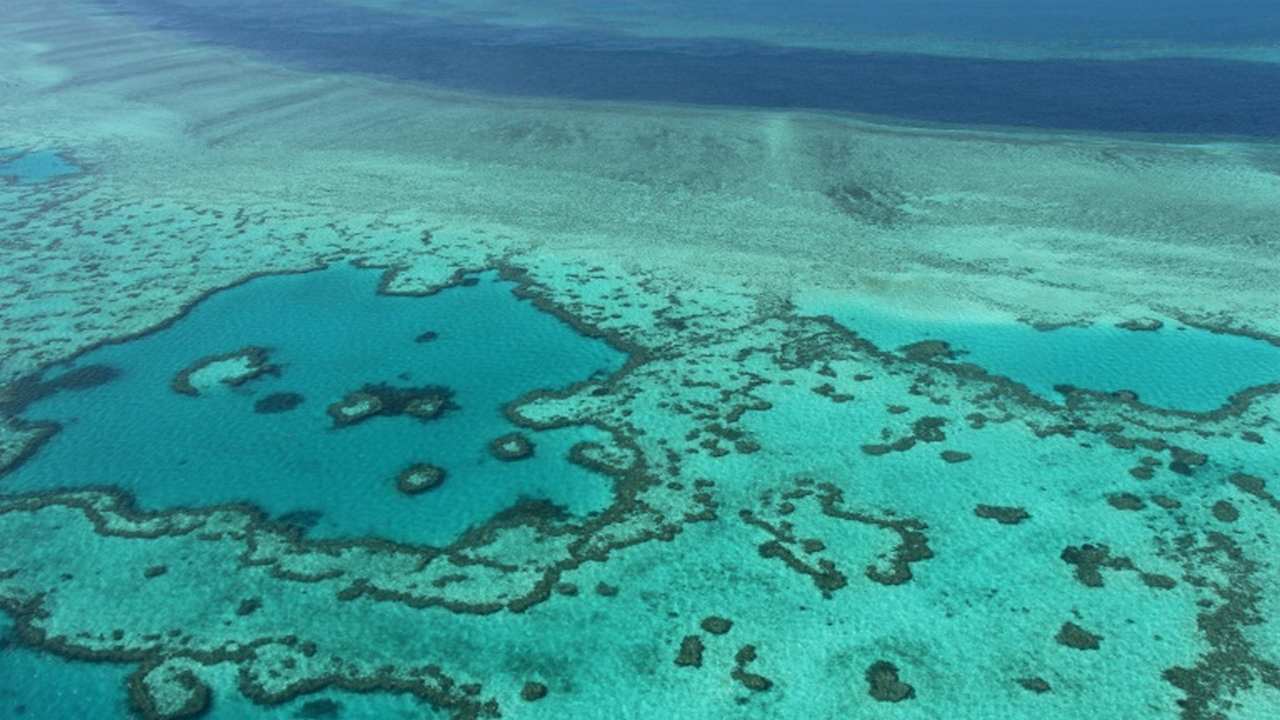A row is raging over Australia’s warming-damaged
Great Barrier Reef
, with firms worried that scientists’ apocalyptic warnings are scaring visitors out of the water. Every year, more than two million snorkel-wielding tourists head to Australia’s famed coral ecosystem, generating revenues of $4.3 billion and supporting 64,000 local jobs. [caption id=“attachment_5277811” align=“alignnone” width=“1280”] Every year, more than two million snorkel-wielding tourists head to Australia’s famed coral ecosystem. Image: AFP[/caption] But damage done by higher temperatures, which turn patches of the reef ashen white, has threatened to put a break on the number of tourists willing to wrestle their way into a wetsuit. There was surprise then, when the
Reef and Rainforest Research Centre
recently published a markedly more optimistic
report
, heralding “significant signs of recovery” at major dive sites around Cairns and prompting a flurry of upbeat news coverage. If the report’s findings seemed out of kilter with other studies about the reef, that was by design It was part of an effort to show that not all of the Great Barrier Reef is an aquatic wasteland, according to Col McKenzie of tourism industry lobby group AMPTO, which helped carry out the research. “Overall, are we seeing a drop in visitation because of the negative press, absolutely we are, there’s no doubt about that,” McKenzie told AFP.
Every year, more than two million snorkel-wielding tourists head to Australia’s famed coral ecosystem. Image: AFP[/caption] But damage done by higher temperatures, which turn patches of the reef ashen white, has threatened to put a break on the number of tourists willing to wrestle their way into a wetsuit. There was surprise then, when the
Reef and Rainforest Research Centre
recently published a markedly more optimistic
report
, heralding “significant signs of recovery” at major dive sites around Cairns and prompting a flurry of upbeat news coverage. If the report’s findings seemed out of kilter with other studies about the reef, that was by design It was part of an effort to show that not all of the Great Barrier Reef is an aquatic wasteland, according to Col McKenzie of tourism industry lobby group AMPTO, which helped carry out the research. “Overall, are we seeing a drop in visitation because of the negative press, absolutely we are, there’s no doubt about that,” McKenzie told AFP.
Scientists' apocalyptic warnings are scaring visitors out of Great Barrier Reef
Agence France-Presse
• September 27, 2018, 21:37:07 IST
Every year, more than two million snorkel-wielding tourists head to the Great Barrier Reef.
Advertisement
)
End of Article